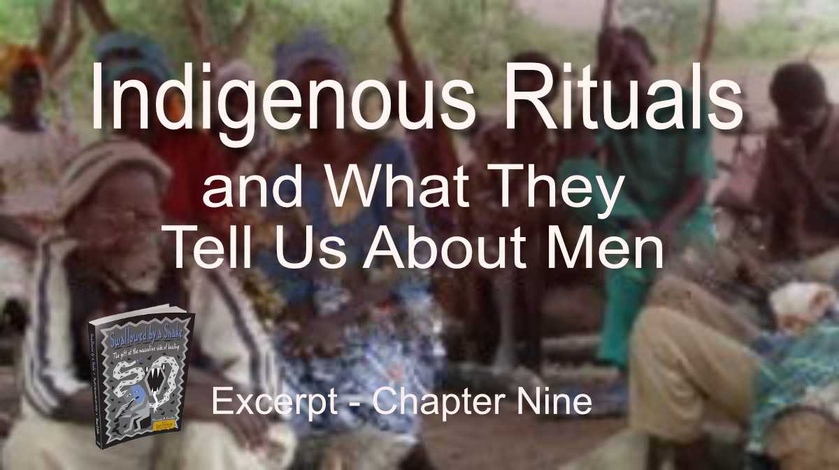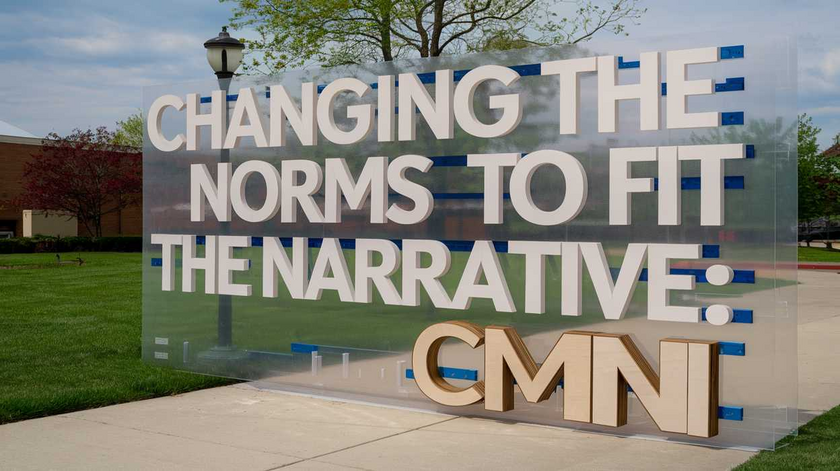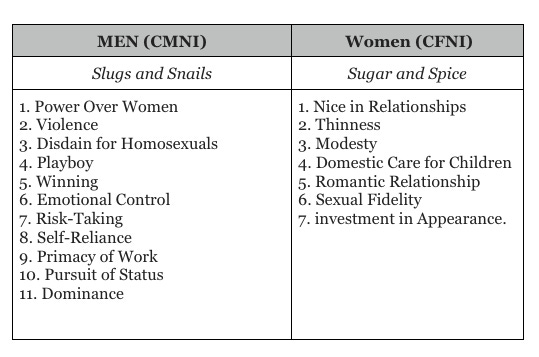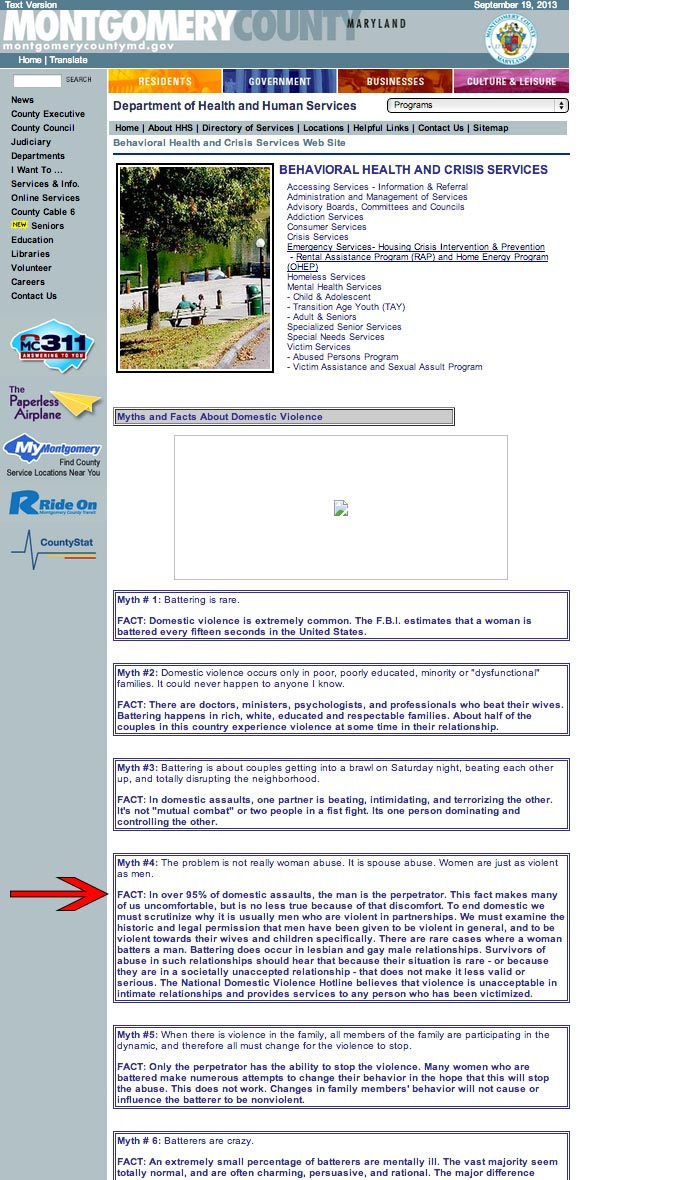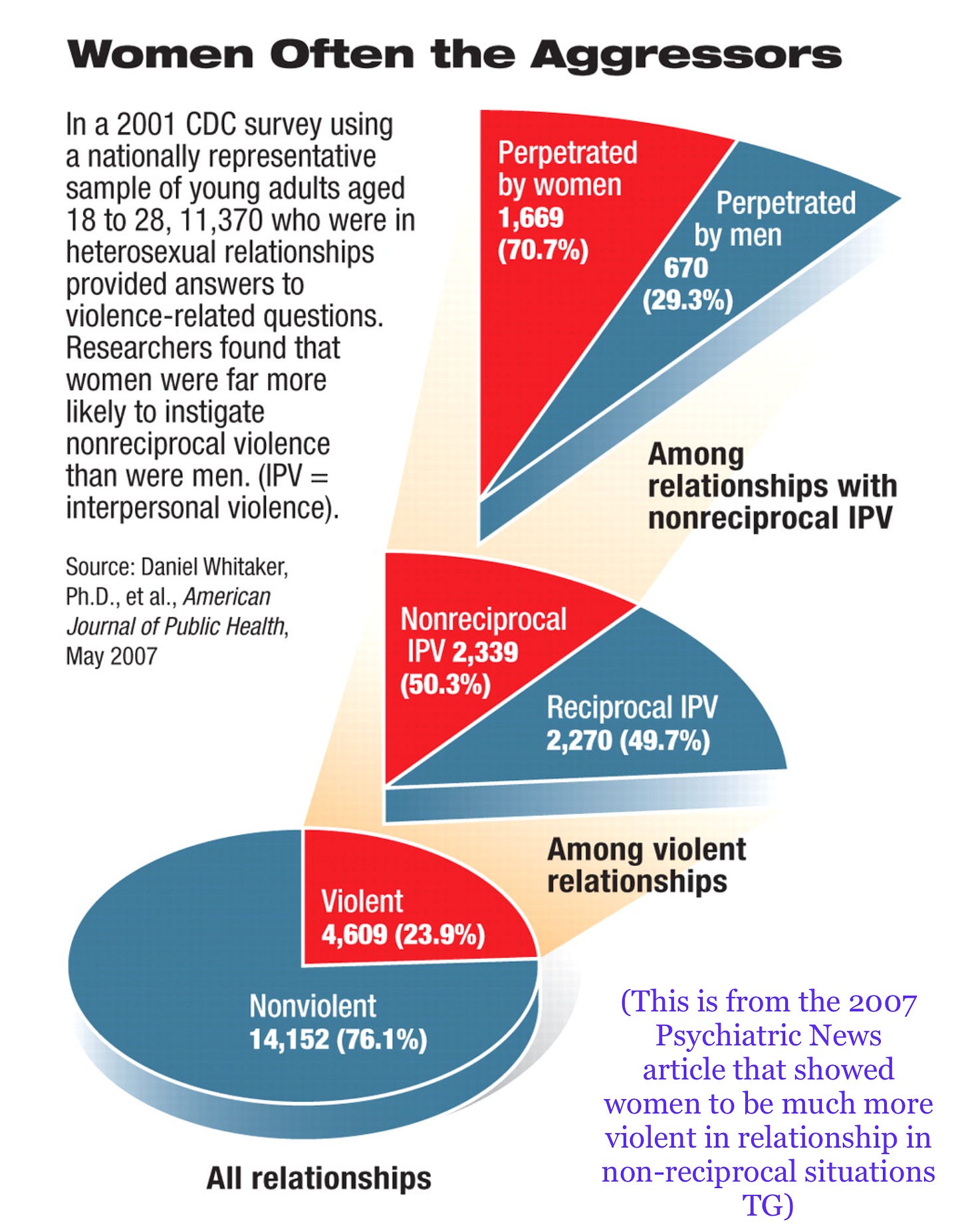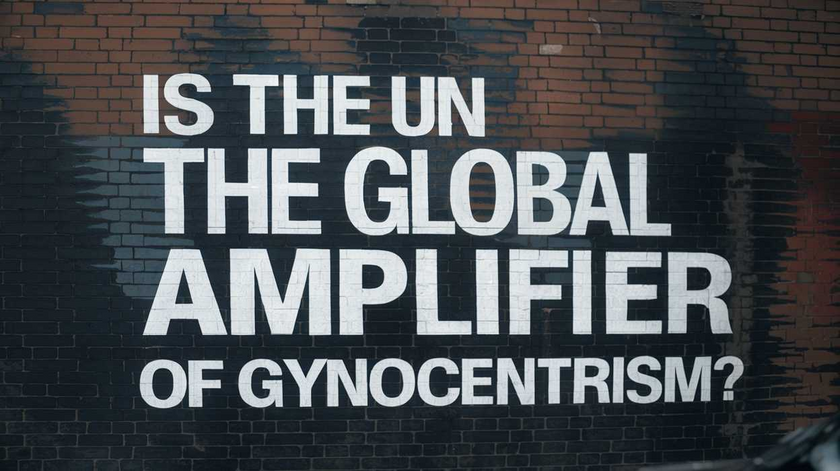Cross-Cultural Grief
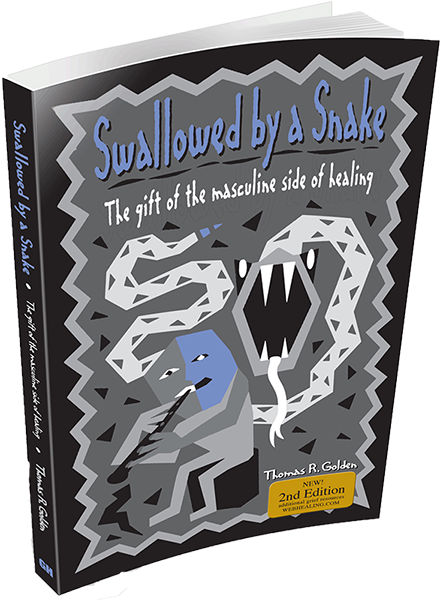
This is chapter nine of Swallowed by a Snake: The Gift of the Masculine Side of Healing. In the late 1980’s I was confused about men’s ways of healing and bumped into the anthropological research on cross cultural grief. It was this research that clearly showed the tendency of indigenous people to give men activities following a loss. The more I studied the more I saw that men relied on action as a mode of healing. It was easy to admire the grief rituals these folks offered to both men and women. See what you think.
Chapter Nine - Cross Cultural Grief
Indigenous people around the world have highly developed rituals and mechanisms in place in their cultures to aid the resolution of grief. These rituals are an important part of life for these people. Their cultures are fertile ground for grief to be nourished. In many ways we are the primitives, because we have very few mechanisms in our culture that function in a similar way. By studying the way indigenous people grieve we can begin to get some idea about the state of grief in our own culture and our inadequate rituals. Using the analogy of a business or a sports team that is not doing well compared to the competition, we can examine a successful party and learn from their achievement. We will probably not adopt a specific grief ritual from another culture, but we will be able to see how these cultures have incorporated grief into their daily lives and how they have developed different rituals for men and women.
These cultures have implemented action-oriented rituals that allow both men and women tasks that connect them with their grief. In our own culture we have no such thing. We are left to our own devices to heal our grief, many times without the support of a caring community. Given this void of ritual, men and women are put into a precarious state. Often, women are able to overcome this void by using their skills of relating and their natural tendency towards verbally sharing their grief with others, but men, usually with strengths of a different nature, are at more of a disadvantage. Without culturally-endorsed rituals men are left with nothing to do following a death. It has been my clinical observation that men in our culture grieve through task, that is, they find activities that allow them to access and heal their grief. Through studying the cross-cultural literature we can begin to get a glimpse of the possible root of a man’s tendency in our own culture to connect his grief with action.
The least we can expect is to stimulate our own thinking about different ways to express grief. Our own weakness in dealing with grief can be strengthened by observing the strength of the tribal culture’s ritual that is so effective in helping their communities come to terms with their loss. With that said, let’s look at what can be learned from grief around the world.
Community
One of the first things we notice is the difference between the social structure of indigenous people and our own way of life. Tribal cultures live in communities of intimately interconnected people who are closely affected in some way by the death of any member. They live in close proximity, rely on each other for the necessities of life, and usually have a common history and world view. There is a bond between them that is amplified by the feeling of “us” and “we” that develops when a group of people share such interdependence. The people of these cultures have ritual structures in place that are designed to support those in grief. There is usually a strong expectation and a sense of responsibility that the community will lend its support to those in pain. There is a sense that each death is a loss of the community, not a loss that is isolated.
We can contrast this with our own situation, where there is a certain invisibility in our interdependence. We live together in neighborhoods but not necessarily communities. Many times the neighbors who live three doors down the street have little attachment to or connection with our family. We shop in different places and work in different settings. When a member of a tribe dies, it is a person who was connected in many ways to the community. When a member of a neighborhood in North America dies, too often it is merely someone who lived down the street.
The interdependence of the tribal cultures can be better compared in some ways to the family unit in the United States. Families are interdependent in a similar kind of way, with each member having prescribed roles and duties and interacting on a daily basis. In many ways our families have become our communities. But without the embrace of a larger community we are left with fewer places to receive support for our grief. Our primary means of support frequently is limited to the members of our family. A table with many legs is not affected by one leg being sawed off, but a table with three or four legs is crippled by a similar loss. This is one of the reasons for the emergence of grief counseling in our culture.
World View
Another difference we notice is that the world view of the indigenous people in some way brings meaning to grief. Many times grief is seen as food for the soul of the dead person. The Minianka tribe in Africa see the tears of grief as being nourishment to the newborn soul of the person being grieved. Without the tears the soul could not move beyond the land of the living. In this way the mourners see their grief as a benefit to the person who has died. The variations of this theme are many, but they all incorporate the idea that grief is a necessary process and without it there is some sort of trouble. It is easy to see the contrast to our own culture where people tend to feel that their grief has no purpose or meaning, or worse yet, that it is a selfish act.
Marking the Griever
There are many common themes in the grief rituals among indigenous people. One of these is the tendency to mark the griever. All sorts of mechanisms are used, but one that is found in many cultures is hair. For many tribal people hair is a symbol of life. It marks the passage of time and is therefore connected with life and death. Many times the grievers either cut off their hair or allow their hair and (in the case of the men) beard to grow in response to a death. This is done as a symbolic act and as a part of a ritual process prescribed by the community, but it also functions as a way to mark the mourners. All the people of the community are aware that a certain haircut means a person is grieving. There are many variations on this theme, including special cuts where only a part of the hair is cut or all hair is sheared. The hair can be cut with all sorts of instruments, such as sharpened seashells, or it may be burned off. Sometimes the cut hair is saved as a memorial, to become part of a necklace or be used in a ritual. The important message of the special hair cut is that this is a person in pain, a person who is grieving, and the treatment he receives is altered due to his status as a griever.
Other ways of marking the griever include covering oneself with ashes or oil or certain colors of paint. In one African tribe there is a complex system of designating the colors of grief paint to alert the community to the type of loss that has been suffered. For instance, a man whose father died would wear a certain color of paint in a certain place on the body. If it had been his mother who died, the paint would have been a different color and painted in a different design. This simple system not only alerts the community to the fact that this man is grieving, it also clearly marks the type of loss that has occurred.
Bark
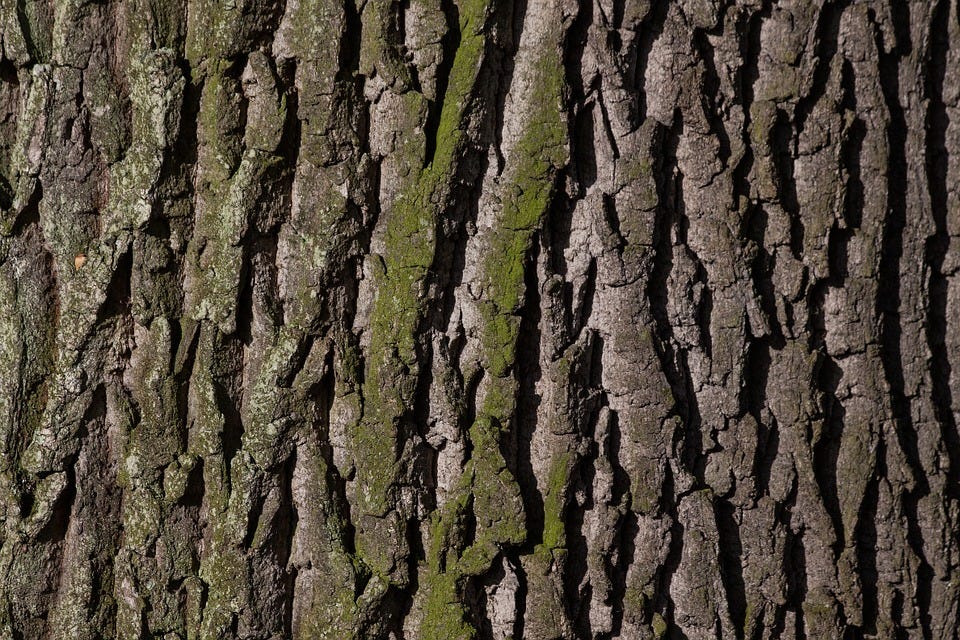
Bark is used in some cultures both as a way to mark the griever and as a symbol of grief. The Karanga people of Africa wear bark to mark themselves as grieving. Women wear a bark necklace, and men wear a woven bark chain around the head. The bark serves also as a symbol of loss, indicating that an individual has been stripped away from the community as bark has been stripped from the tree.
The story of Jaque, also related in a previous chapter, is another example of bark used as a symbol of loss. When his brother died suddenly, Jaque was torn by sadness and anger. Following ancient custom, he went into the forest, selected a tree and, after uttering a prayer, stripped away a piece of the bark. Now the tree, like Jaque, had lost something whose loss caused deep pain. Many times over the following months he returned to visit the tree. As the seasons passed, the wound in the tree healed. So did the wound in Jaque’s heart. With the tree as a visible reflection of his loss, Jaque was reminded that he, too, was healing. Jaque is a Native American, a Cree.
In this example, the bark of the tree was used as a symbol of the pain that the man was experiencing. As the bark is a covering of the tree, it is almost as if the man had his own covering sliced away in a similar manner. A part of him was taken—not his core, which still exists—but something that was a part of him all the same. The tree stood as a symbol for his loss; it was wounded in a similar way. Each time he visited that site the tree could remind him of his own wound and, as he watched the tree heal, of his own healing.
These are some of the ways native people have used to mark the griever. Marking gives the griever a public role to play and, in essence, permission to publicly and privately grieve. We can contrast this with the invisibility of grief in our culture. One of the last markings to be discarded in our culture was the black arm band. We now have no overt way to differentiate the people in our community who are grieving from those who are not. The men and women who are grieving can feel this invisibility and the accompanying lack of permission to grieve. Indigenous cultures prescribe specific behaviors and roles for the bereaved, the grief “norm” as it were. This can be contrasted with our own situation where there is confusion over where and when to express grief, or how much grief and of what duration is normal. This lack of “norm” leaves everyone guessing. The people I have worked with have all had the same question, “Is what I’m going through normal?” We are left untethered with a great deal of pain but no box to put it in.
When Does Grief End?
In some tribal communities, it is the responsibility of the community to clearly state when the time of official grief has ended. An example might be that a grieving man was marked by being forbidden to eat a certain type of food. When the community members feel it is the right time, they will offer the particular food to the grieving man as a symbol that he is now ready to re-enter the community as a non- grieving person. There are examples other than food—a certain way of dressing or different behavior—but the essence is the same: the community clearly marks the boundaries of grief for the griever. This contrasts with our own culture where there is great confusion about when and how much grief is appropriate. We live in a near vacuum of social indicators about the time needed to grieve. The most prevalent guideline we have is that many people don’t think you should be grieving at all.
Separating Men and Women in Grief
Another form of marking the griever is the separation of men and women in the grief rituals. By separating the grievers these cultures are honoring the differences in grieving between men and women and setting up different containers for healing. An example is the Bara people of southern Madagascar who designate two huts when a death occurs. One hut is the Tranadahy, which means “male house;” the other is the Trano Be Ranomaso, which means the “house of many tears.” During the period of time after the death these huts are used for congregating and receiving condolences. The men’s hut is the center of activity regarding the death. The men plan and initiate the rituals, receive condolences from the male guests, and take responsibility for the body. The women’s hut is more the center of emotional expression, with the women keening, wailing, and crying as they receive condolences from the female guests. These people literally have different places for men and women to be following a death. In this way, men and women are among their own sex and are in a position to be healed by their same-sex community members. It also honors the difference in grieving styles between men and women by allowing the opportunity for each to be near those who grieve as they do.
Tribal people have found a box in which to put grief. That box is ritual. The ritual that is used is both a container for the effects of grief and a norm that shows people the way to grieve. It can be any number of activities. For women the ritual many times is related to sharing their pain with each other, crying or keening. Men, on the other hand, usually have a ritual that includes some sort of action—singing sacred songs, drumming, dancing, tree wounding, etc. When Rosenblatt examined grief in 87 different cultures, he did not find a single culture in which men expressed tears more than women. In nine of the cultures studied the men didn’t cry at all, and in most of the cases studied the men cried less than the women.24 This points to a significant difference among men and women: men don’t use tears as much as women when dealing with their grief. This finding is not limited to western cultures, as many of the cultures Rosenblatt studied were tribal people who still maintained their grief rituals from their cultural heritage. From this we can see that even in cultures where there is an adequate container for grief the men tend to use tears less often than women. This finding seems to verify the research, regarding a man’s decreased levels of prolactin and the increased difficulty for men to access their tears.
What we find when we examine the cross-cultural literature is that men many times have active rituals that help them move into their grief. There is a tribe in Africa where the men literally face the women who are crying and keening in order to get into the mood of grief. They use this activity of watching the women to bring forth their own sense of loss. Even these tribal men with the luxury of intricate and beautiful grief rituals acknowledge that it is not an easy task for them to move into their feeling state. By their actions of facing the women they do something that puts them closer to their own grief.
Drumming
Another active ritual used around the world is that of drumming. The men of the Yoruba in Africa use drumming as an active means to deal with their grief.25 They have a variety of rhythms for different parts of the funeral service; a rhythm for washing the body, a rhythm for lowering the body into the grave, etc. After the death of a chief the men start playing a specific monotonous grief rhythm over and over. This rhythm is played continuously for three days. The men of the tribe are responsible for keeping the rhythm going and do not allow it to stop. They drum day and night, sleeping in shifts and then drumming for long periods. It is through this ritual, and many others, that the men have something to do after the death, and this activity helps them engage feelings of grief. The rhythm signals to the tribe that a state of mourning exists and is a constant reminder of the loss to the community.
Externalization of Pain
Another aspect of active ritual is the externalization of pain. This is accomplished in a great variety of ways, from lacerating the body, scratching oneself until the blood flows, knocking out a tooth, or even cutting off a finger. Anthropologists tell us the reasons for these mutilations are related to a number of factors encompassed in their world view, including rendering the ghost of the deceased harmless, convincing the soul of the dead of the sincerity of the grief, establishing a corporal union between the living and the dead, strengthening the departed, as an offering, or purification. A few anthropologists have seen the core of these actions: they are outward acts that express inner states. By wounding the body in some way, the inner pain has an outer parallel. This is similar to Jaque who wounded a tree as a symbol; it is just that these people are wounding themselves. As their wounds heal, they will have an outer symbol for the healing of their inner wounds. They will also have physical scars to remind them for some time of the loss that occurred. One Australian tribe has a name for grief that literally translated means “bad guts.” That is probably the best description of grief I have ever heard. The mutilations cut away at the “bad guts” and let them flow. There is a ritual among the Aborigines where the blood that is dripping from the mutilated griever is allowed to drip onto the corpse, apparently in an effort to merge the living and the dead and to strengthen the dead person. I am certainly not suggesting that we adopt these rituals as a means to facilitate our own grief. However, they are honest and effective means that these people have found to externalize their pain and “bad guts.”
Let’s turn now to looking in more detail at the way a particular tribal culture deals with grief. We can examine closely the grief rituals and the mechanisms that the men use in dealing with their grief.
The Yolngu
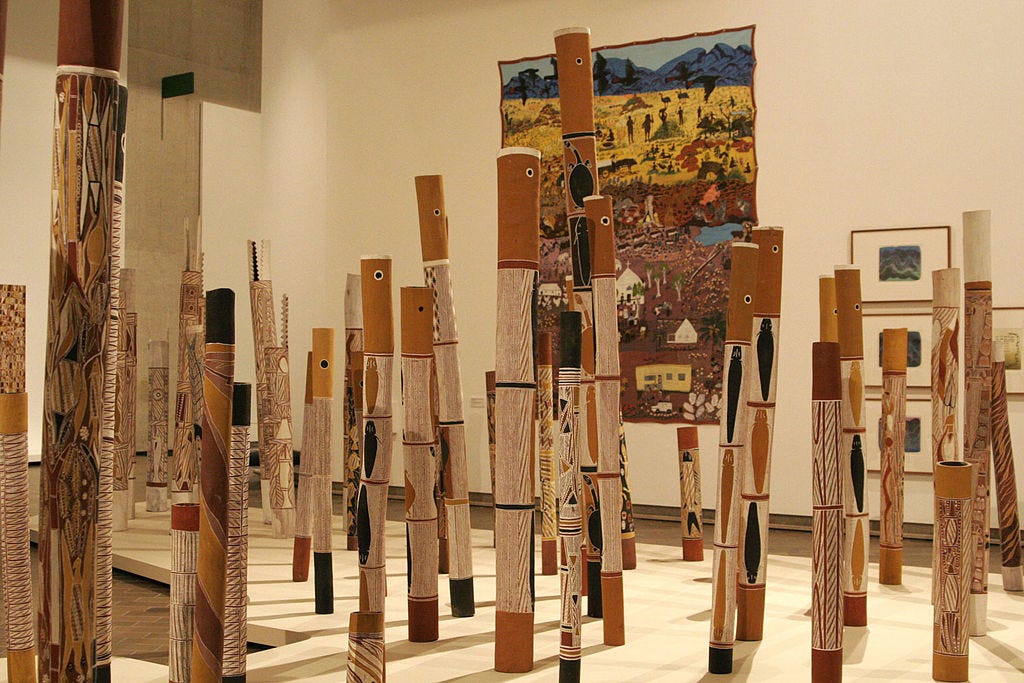
Our first example is an Aborigine people of Australia, the Yolngu.26 The men of this tribe begin to work with their grief before a death occurs. As a person becomes seriously ill, the men respond by singing sacred songs. Groups of men gather around the bedside of the ailing person and sing the sacred songs of the tribe. This is not a “let’s sing a song and go” routine. The men will sing continuously as the person lies ill. The purpose of the songs is to comfort the dying person, to keep him alert, to insure that the person will die in the right “Manikay” (sacred song cycle), to alert the ancestors that this person is coming to them, and to insure that his soul will be oriented towards its “home” after death. As the men do this, the women of the tribe are responsible for the care of the sick person and feeding the men who are singing. If there is consensus that the person is dying, the women will also cry or keen along with the songs. This crying or keening by the women is called “ngathi.” Both the crying and keening and the songs by the men are accompanied by traditional Aborigine instruments, the clapsticks and the didgeridoo. Sometimes the ailing person recovers, and if this happens the singers disperse and life goes on. If death occurs, quiet covers the camp, uncharacteristic of the usual hustle and bustle.
At the ritual announcement of the death, which is made by a man, the women of the tribe keen and wail and throw themselves to the ground. At times they will strike themselves with sharp objects. It is expected that the men of the community will restrain the women from seriously injuring themselves. The men step forward and pull the weapons from the women’s hands and throw them out of reach. The women usually respond to this by ceasing their attempts at self-injury. This action of protecting the women is seen as a sign of protection for the grievers, and a show of community support for those who are most affected by the death. It is an action that men can take that is both protecting their loved ones and an indication of their own grief.
The men of the tribe will also keen at times, particularly if the dead person was a close relative, but the more common emotional expression of the men is venting anger by dancing. It is said that the men will dance in an “energetic and violent” manner that signifies hostility. According to Rosenblatt, this expression of hostility directed outward is a common masculine activity following a death. Many times a man’s anger will open the door into his other feelings of grief.27
Tribal Ritual in the 20th Century
The Yolngu people are in many ways between two worlds. Although they have maintained many of their rituals, they also live in the midst of twentieth century technology. If a member of their tribe has died in the nearby hospital, the body is retrieved in ritual fashion. The community goes to the hospital and obtains the body, then forms a “slow, emotional, and ritualized” procession back to their camp. The body, moved with accompanying dancing and singing, is taken to a shelter where it will lie until burial. It is said that even the cars take part in the ritual, slowing, stopping, starting, and reversing as they mimic the movements of the dancers.
The coffin of the dead person is painted with sacred symbols by the initiated men of the Yolngu. These symbols are secret and are not allowed to be viewed by women and children. The purpose of the sacred symbols is to mediate between the soul of the dead person and the ancestors who will help this newly born soul along his way. Prior to the use of coffins, the Yolngu men would paint the body of the deceased with red ochre and then paint on the sacred symbols.
Singing the Grief
Throughout the days of the ceremonies grief is openly expressed, many times through song. These songs communicate many things: a wish for the return of the dead person, memories of the events in the life of the one who died, and the hope of a safe passageway for the soul to the ancestors. The men often will be singing day and night, and will sleep in shifts as the songs continue. The singing of songs by the men is an important part of the funeral service. They are accompanied by the dancing of the women who enact the stories that the songs are depicting.
The grief that is felt and expressed at the funeral ceremonies can continue for some time. It is said that late at night after the day is done and the tasks of the community are completed, you can sometimes hear the keening of a solitary mourner. The sound is heard throughout the quiet of the community and is accepted as a reminder of the pain and grief that the mourner still feels.
The men are responsible for the ritual activities of their community, and in many ways become like stage managers or directors, making the ritual preparations, rehearsing the songs, and making sure the process runs smoothly. The Yolngu men are active in working with their grief, with very specific activities assigned to them. These activities of singing, dancing, and directing the rituals give the men a framework in which their feelings can emerge and be honored and acknowledged. The women are also busy in keening, crying, dancing, caring for the children, and feeding the men. The men and women of this tribe have very specific roles to play, and both support each other through the difficult period of grief.
The Dagura People
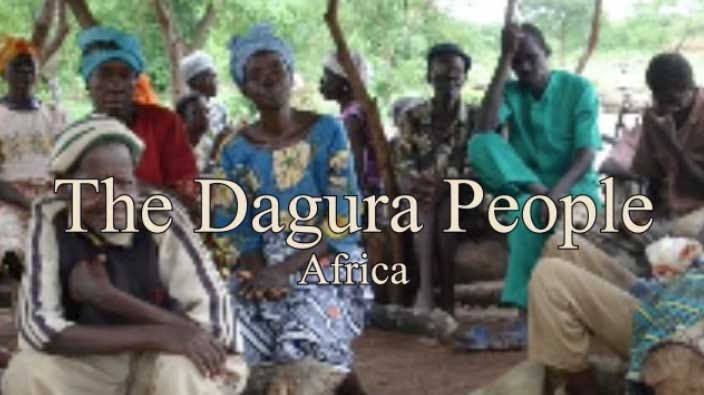
We now turn to another example of indigenous grief rituals, that of the Dagura people of Africa.28 When a death occurs the women of the village begin to grieve. Their grief is somewhat muted, however, until the men have ritually announced the death. This announcement cannot occur until the men have created a “sacred space” for the grief of the village to emerge, and no man is allowed to show signs of grief until after this ritual space has been created. This is done by invoking the aid of the spirits through a private ritual performed only by the men. The invoking of the spirits is partly designed to elicit enough grief from the mourners to allow the dead person to move into the world of the ancestors. The Dagura believe that the soul’s journey into the next world is dependent in some ways upon the grief expressed by the mourners. Without adequate grief, the soul is thought to be stuck on this plane of existence and unable to leave the world. They have thus connected their grief with a purpose, that being the birth of the soul of the newly dead. The creation of ritual space, a safe container for the expression of grief, is seen as essential to the birthing of the spirit of the person who died. A part of this creation of sacred space involves throwing ashes around the house of the deceased and the ritual preparation of an actual physical space for the grief ritual. The announcement states that there has been a death, the ritual space is ready, and it is now time to grieve.
The Dagura Grief Ritual
The grief ritual itself is complex and beautiful. The grieving space is divided into different sections. The body of the dead person is dressed ceremonially and seated on a stool in the section called the “shrine.” Two women elders are seated next to the body and are charged with the duty to collect the grief that is being expressed and to “load it on” to the dead person to help him or her in the journey toward the ancestors. The shrine is colorfully decorated and contains some of the important possessions of the dead person. There is a boundary around the shrine which symbolically marks the separation between the living and the dead, and outside of the two women tending to the body, no one is allowed to enter the shrine, for to do so would mean entering the realm of the dead.
Between the shrine and the mourners is an empty space that represents chaos. Within this space people are allowed to express any form of grief they want, as long as it is related to their feelings about the death. Crying, dancing, or any expression of emotion is accepted and expected to take place within this space. There are people who are designated as “containers.” These people are often relatives who have come from afar. Their job is to insure the safety of the space for the grievers, making sure that no harm comes to those who are actively grieving. The Dagura believe in releasing grief with all its intensity, but they have also developed a system in which the intensity does not exceed the capacity of the mourners. It is like a system of checks and balances. The containers follow the grievers as they mourn and if they stray out of the ritual space, will gently tap them on the shoulder to remind them to come back into the contained space.
On one side of the shrine are the men of the village and on the other side are the women. Each group consists of mourners and containers. The mourners are further divided by the “kotuosob,” a small piece of rope tied around the wrist of the griever. The rope designates a person who was particularly close to the deceased, perhaps a family member. This marking alerts all the participants that someone who is wearing the “kotuosob” is what they call a “center of the heat” person, that is, a person who is more likely to be in danger of “grieving himself to death.” The Dagura see grief as food for the psyche, necessary to maintain a healthy psychological balance. But they also see its danger—too much grief and a person will “lose their center” and, they believe, can grieve to death. Thus the Dagura designate specific containers to follow closely behind the tagged person and do exactly as they do, including dancing, jumping to the beat of the drum, or pounding the ground. Sometimes when a tagged griever is experiencing a great deal of grief, a group of containers and mourners will form a line behind him or her with each person in the line doing the same action as the primary griever. It is understood that this transmits the feeling of the primary griever into all of those down the line. This type of process is viewed as a form of silent and physical support to the person who is grieving. It is important to point out that among the Dagura the healing of grief is gender specific. That is, no woman will approach a man in trying to help him with his grief, and no man would do the same for a woman. They believe that it takes a man to help release and heal the grief of another man, and a woman to reflect the grief of a woman.
Music
Music plays an integral part of the ritual. The ceremony is accompanied by xylophones and drums and two singers. The xylophones are divided into male and female. The male xylophone follows the mood of the singers and the female xylophone accompanies the male xylophone with a redundant set of notes. The singers are charged with the responsibility of singing (chanting) the life of the dead person. They sing the joy and sorrow of the family history and the events which led up to the death. This spontaneous singing is done in order to emphasize and direct the grief of the community.
Everyone in the community is expected to take part in this ritual. It is held as a solemn responsibility. Anyone who happens to be near the village during the ritual is expected to participate. It is as if death stops life for a while, all other activities coming to a halt. In the words of one singer, “We are trapped in a world in which we are not in control because of the mighty power of death.”
In the Yolngu and Dagura cultures, and in others around the world, grief is vented at the funeral in a very intensive fashion. The rituals of both last about three full days. During that time grief is given all the attention of the community, and it flows and flows. It should also be noted that in both cultures the support for a person’s grief does not stop after the funeral. Most indigenous people have post- funeral rituals that provide further opportunity to express grief. Rituals are practiced throughout the year, often marking important dates such as the one-year anniversary of the death. The community expects the grief to continue for some time, and in both the Yolngu and Dagura cultures grief can be released after the funeral and at the next funeral, if need be. This can be compared with our own culture where there is usually very little expression of grief during the funeral services, and few, if any, culturally-endorsed occasions for expressing grief thereafter.
Both the Yolngu and Dagura examples begin to give us an idea of how our culture lacks sufficient contained space to process the emotions that follow a death. Both have woven grief into the fabric of their lives and into their world view. Both cultures have linked a person’s grief with the purpose of aiding the soul in its journey. These cultures are very explicit in providing markers of who are the grievers and actions and roles to be played. We have very little of this. Both give men specific things to do following a death, activities that help them in connecting to their grief. Among the Yolngu, men have the responsibility of singing, and with the Dagura, men are responsible for the ritual and the healing of other men.
Imagine just for a moment that the people of the Dagura and the Yolngu suddenly lost their active grief rituals. What would happen to their men and women? What would the men of the Yolngu do without their songs? In some ways this is a parallel of what is happening in our culture. We have much to learn from indigenous people about the resolution of grief. We can use this knowledge to find creative mechanisms that are right for us.
24. Rosenblatt, P.C., R.P. Walsh, and D.A. Jackson. Grief and Mourning in Cross-Cultural Perspective. 1976, H.R.A.F. Press.
25. Diallo, Yaya, and Mitchell Hall. The Healing Drum: African WisdomTeachings. Rochester, Vermont. 1989, Destiny Books.
26. Reed, Janice “A Time to Live a Time to Grieve: Patterns and Processes of Mourning Among the Yolngu of Australia.” Culture, Medicine, and Psychiatry, 3, 1979.
27. Rosenblatt.
28. Some, Malidoma. Ritual: Power, Healing and Community. Portland. 1993, Swan Raven and Company.
If you are interested in this book you can find it here.
